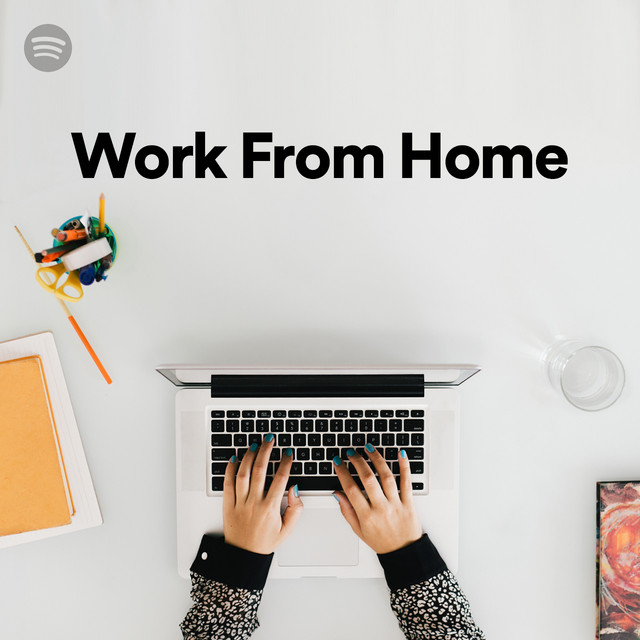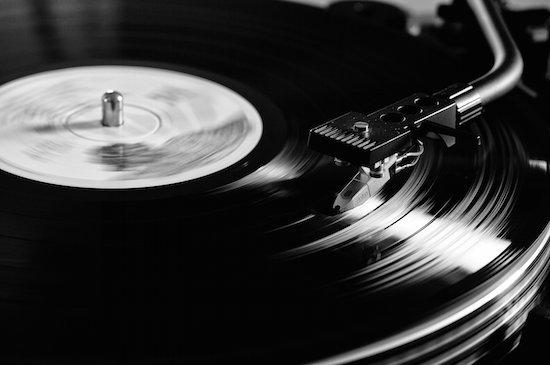Back in early April arts correspondent Lanre Bakare watched Thundercat unpick his favourite basslines for Pitchfork, and promptly disavowed his musical choices. "Why am I listening to this?" he wondered, gesturing at the downbeat, ambient, new agey stuff he’d been writing to. "Why can’t I incorporate basslines into my day?" Taking Thundercat’s lead, and with the help of a bass-heavy back issue of The Wire, he created a playlist entitled 100% Basslines Beebee featuring bangers by Neu, D’Angelo, Cream, Hair, Herbie Hancock… because, as he put it at the time, “When you need to get shit done, stick on a big funky bassline and you’re laughing.”
With a second national lockdown at least looming where not in place across much of Europe, the home-office set-up is no longer an emergency stop gap. Four in five office workers hope the shift to remote working will – at least in part – be permanent. Along with desk lamps and 10-minute lunch recipes, WFH-themed playlists have been a top consideration in how to make your home work for work. By the end of May Spotify had announced a startling 1,400% increase, compared to the first 10 days of March.

The company’s marketing team routinely uses customer data to highlight eye-catchingly meta listening trends. (One billboard in the 2016 ad campaign read “Dear 3,749 people who streamed ‘It’s the End of the World As We Know It’ the day of the Brexit vote, Hang in there.”) So during lockdown, it was keen to point out that the most sought-out tracks on these WFH lists included ‘Work From Home’ by Fifth Harmony, ‘9 to 5’ by Dolly Parton, ‘10,000 Hours’ by Dan and Shay, and Doja Cat’s ‘Boss Bitch’. Basic classical – Bach, Beethoven – featured heavily too. (Pianist Lang Lang’s version of ‘Für Elise’ was a firm favourite).
Even if these choices would choke your working process as comprehensively as they would mine, the fact that tunes to work to was trending across the board should come as no surprise. It is, after all, a subject as old as the progressive workplace itself.
Ever since early 20th century idealists of Frank Lloyd Wright’s ilk equipped their new high-rise office blocks with pipe organs for lunchtime concerts and music lounges for tea breaks, managers and scholars alike have studied how music impacts performance. During the Second World War, bosses attempted to counter the monotony of the factory floor with radio shows, including the BBC’s Music While You Work: twice-daily half-hour slots of continuous big band vibes. The rules were strict. No rumbas or slow waltzes; nothing too fast, too fussy or too slow; no clapping motifs. But it worked: the programme’s organiser Wynford Reynolds reported improved morale and productivity by up to 15%.
Of course, the decades that followed saw the very notion of the workplace explode, with open-plan offices, hot desking and remote working taking off in tandem with ever-accelerating technological advances. The desktop computer became the laptop became the smartphone, and where each went, so the music followed. The world’s first online transaction, it turns out, was a lunchtime music break: at noon on 11 August, 1994, Phil Brandenberger sat at his desk in Philadelphia, and purchased a CD of Ten Summoners’ Tales by Sting, for $12.48 plus shipping. Within 20 years, police forces across England and Wales would be forking out upwards of £600,000 of tax payers’ money annually for PRS licences so music could be played in their offices.
Now the benefit of breaks made buoyant with an escapist soundtrack, and beats to take your mind off something manual, or mindless, is obvious. But what of music to think and write to? Studies to determine to which extent music improves concentration and focus have been done, variously, in operating theatres, biomedical research facilities, distribution warehouses and Canadian software companies. A whole industry has arisen, too, to provide functional corporate sound, be that noise-cancelling sound machines or environmental music composed to stimulate brainwaves.
YouTube clips expounding the virtues of coloured noise abound. Serving as a muffling aural blanket, as Michael Aranda explains on SciShow, it plays across all frequencies, masking incidental sound by making it less significant. The Cut’s Madeleine Aggeler ushered in 2019 with a confession: "I needed blankness, a void in which only my work can exist." After trialling white and pink noise, one day, to mix things up, she clicked on a video called Deep Layered Brown Noise (10 Hours) from the user crysknife007, "and my life changed forever." Her descriptors are instructive: a soothing nothingness, a soft monotony, blissful uninterruption, happy ensconcement, the sensory deprivation of her dreams. "It’s like being caressed with a billion yards of silk."
Asking people what they listen to while working quickly becomes a study not so much in musicology as in psychology. The question isn’t what to listen to so much as why listen in the first place. Aggeler, you’ll note, talks in terms of sensation and, crucially, emotion: it’s not that the void itself helps her get work done, but that the void soothes her, and being soothed makes her productive.
When tQ co-founder Luke Turner published Out Of The Woods he sent Richard Skelton a copy. Turner finds silence only induces anxiety, and he can’t write to anything too dynamic or lyric-based either, but in Skelton’s sounds, he’d found surprisingly consistent solace. "You can’t really tell if it’s acoustic or electronic," Turner says. Instrumentals inspired by the climate, the landscape, geological time, they sits midway between a background wash and a pleasing vista. Turner couldn’t write without them.
The degree to which the composer’s intentionality finds an echo in what you are doing while listening is salient. Skelton is working with aural textures. Turner finds texture crucial. "It’s like gripping matter," he says. "There’s enough there that I find actually inspiring. It’s almost like this writing territory in my mind that he landscapes."
Similarly with those basslines. Thundercat talks of them in terms of locomotion: a miracle, an engine, a driving force. No wonder then that in Bakare’s writing, they became both a ballast and a propellant, something to mentally synch to, so that, as he puts it, "you get locked into a groove and before you know it, you’re done".
Striking a balance between the unknown and the familiar is crucial, too. The British satirist Jonathan Coe used to listen to music all the time while writing – unobtrusive early 20th century classical; ECM-style chamber jazz – but has recently found the quiet more conducive. "The perfect place to write," he said in an email, "is a train. I love the way the landscape rolls by outside the window, changing in ways which are subtle and slow but not too compelling. Something to look at if you need to, but which can also be ignored." The musical equivalent, and his all-time favourite piece to work to, is Steve Reich’s Variations for Winds, Strings and Keyboards.
Composer Kenjiro Matsuo of Japanese sound design company Invisi says that music is always about what comes next. If you know the tune, you know the future. Depending on how stimulating that tune will become – or how soon you need to pick a new one – what you’re listening to can compete for your attention to the detriment of what you’re working on. Anything too powerful creates stress. Any sound too unpredictable (as Joe Palca and Flora Lichtman noted in their 2011 book Annoying), will make even the calm on either side of it stressful.
So Matsuo, like others in the focus music field, has developed a self-generating, algorithmic approach combining user data (listening and environmental preferences) with Brownian motion (an organic, randomised pattern of constant subtle fluctuation). By contrast with that stretch of brown noise Aggeler probably now knows by heart, it is customised and in constant flux. Much like the infinitely new spacescapes that the algorithm behind No Man’s Sky can theoretically generate for players, Matsuo cannot know what any one user will hear when they log in. "Our system is not exactly music. It is flow. Boring flow." Not something to listen to so much as to comfortably sit it.
A new take on an old idea then. Furniture music, or la musique d’ameublement, is, after all, what Erik Satie set out to compose in 1917. "A banality in the background," as music writer Bradford Bailey puts it. "This constant, unobserved thing that doesn’t assert itself. Which, conceptually, is a very interesting idea. But it’s also, can we really do that with Satie?"
It’s a good question. It is obviously impossible to hear Satie’s Tenture de cabinet préfectoral (translates as ‘Wall-lining in a chief officer’s office’) as Mrs Eugène Meyer Jr. did when she commissioned it in 1923, but banal, it’s safe to say, it never was. Whatever the artist might invest in or intend for their oeuvre, listening to it, ultimately, is a conversation with what’s already in your mind.
When I checked back in with Bakare at the end of the summer, music wasn’t doing it for him anymore – not the basslines, not I Am The Centre, not the Jurassic Park Theme (1000% Slower) piece he used to cop on headphones with a colleague in a vast open plan office in North London. Endless, grim redundancy write-ups were getting him down. Which makes the point that sometimes, the thing to help with work is to stop working for a bit.
"We operate on a multitude of rhythms," Oliver Burkeman once said, "from the seasonal to the circadian (or daily) to the “ultradian” – the peaking and dipping of energy every two hours or so. Each cycle must alternate between exertion and rest if we’re to function well." When nothing is helping, a walk – without your phone – might well provide the best sounds of all.




